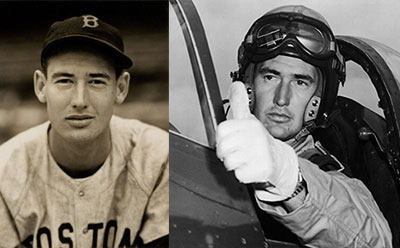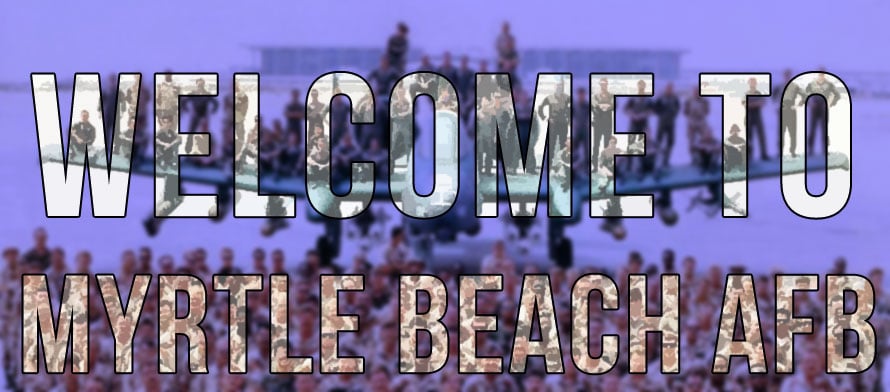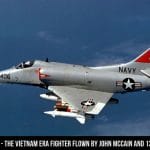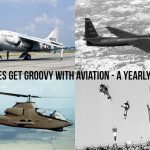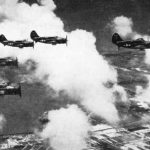Eager to get into the sky, a young man’s infatuation with flight carries him to a small field of the Philadelphia Naval Yard. He runs up and down the makeshift airstrip trying to get his small aircraft he rented for $25 a month, off the ground. The closest he gets is when his experimental plane leaves the end of a ramp he built to launch him upward but then quickly slams into the ground.
Marine Corps Aviation is Born
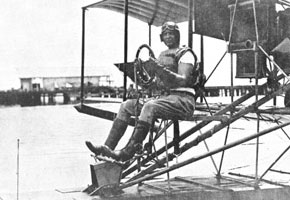
1stLt Alfred A. Cunningham, first Marine Corps aviator
Still, it’s in his blood and he wants more. His eagerness to see the Marine Corps involved in aviation gets the message up the right chain-of-command. Despite his lack of success leaving the ground, he is sent away from the Marine Barracks at the Naval Yard and ordered to report to the United States Naval Academy at Annapolis. There he would attend classes to learn to fly. On August 20, 1912, after only two hours and forty minutes of instruction, Marine Lieutenant Alfred A. Cunningham finally gets into the air in a Curtis seaplane and becomes the first Marine Corps aviator. The day he reported to Annapolis, May 22, 1912, is recognized as the birthday of Marine Corps aviation.
The Navy Department’s Entry into Aviation
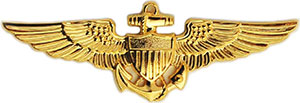
Naval Aviator insignia, worn by pilots in the U.S. Navy. Marine Corps, and Coast Guard
It was a couple years earlier in 1910 that Captain Washington Irving Chambers of the United States Navy would push the Navy forward toward pursuing aviation. Chambers built relationships within both the Navy Department and an aircraft builder named Glenn Curtiss. Using those connections, he worked to get a Curtiss test pilot to become the first recorded takeoff from a ship’s deck, the USS Birmingham, on November 14, 1910.
Curtiss offered to train a Naval officer how to fly one of his aircraft at no cost and the Navy accepted. The Navy Department sent Lieutenant Theodore G. Ellyson to Curtiss’ flying school. He soon qualified as the U.S. Navy’s first officer pilot. In 1911, the Navy Department purchased two planes from Curtiss and one from the Wright Brothers. Each manufacturer trained a pilot and a mechanic, who would then return to their units to train other pilots and mechanics. In 1912, two Marine officers would arrive to train to become pilots, the first of them being A.A. Cunningham.
Marine Aviation 1917 and WWI
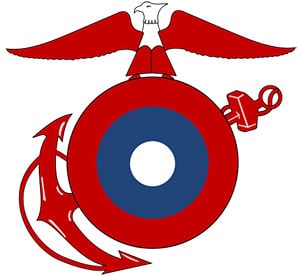
Roundel used by the Marine Corps during World War I
In early 1917 the Marine Corps had five officers and 18 enlisted men in the Marine section of Naval Flying School. By February 26, 1917, upon orders of the Commandant of the Marine Corps, that number was bumped up to 10 officers and 40 enlisted to outfit the new Marine Corps Aviation Company. That date would also include Cunningham being promoted to Captain and tasked with organizing the company.
WWI would see the Marine Corps expanding to a company size unit in the Azores hunting German U-boats and a squadron in France, which provided bomber and fighter support. By the end of the war, the Marines had 8 squadrons consisting of 282 officers and 2,180 enlisted men. In 1919, the Marine’s first aviation squadron was established from these officers and men and still exists today as VMA-231, the oldest USMC active fighter/attack squadron.
WWII and Marine Aviation
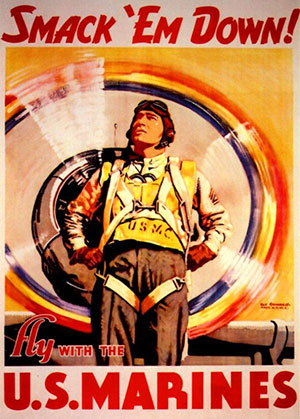
WWII Marine Pilot Recruiting poster illustrated by Maj. W. Victor Guinness, USMC
During World War II, the Marine Corps would reach a peak of five air wings consisting of 145 flying squadrons. The air arm of the Marine Corps would greatly develop and refine their mission of close-air-support of the Marine’s fighting on the ground in the Pacific campaign. Marine pilots were credited with shooting down 2,355 Japanese aircraft, had 120 aces, and 11 Medal of Honor recipients. Following WWII, the Marine Corps air wings were reduced to 21 active duty squadrons and 30 reserve squadrons.
Today, Marine Corps aviation is still a very important part of the Marine Corps’ mission. Marine Aviation consists of three active and one reserve air wings. Below, we share fifteen Marine Corps aviation facts.
15 Facts About Marine Corps Aviation
- Every Marine A Rifleman – The Marine Corps requires each pilot to begin their training with six months of infantry school.
- World War 1 – 1918 Marine Corps aviation consists of a company size unit hunting U-boats in the Azores and a Force made up of 4 squadrons stationed in France
- The first American flying unit to go overseas was the Marine Corps 1st Aeronautical Company in January 1918. They were stationed in the Azores and their responsibility was U-boat hunting
- Ralph Talbot was the first United States Marine Corps aviator to receive the Medal of Honor for “exceptionally meritorious service and extraordinary heroism” on October 8 and 14, 1918. He was assigned to the 1st Marine Aviation Force in France.
- 1st Food Drop – In WWI, Marine Aviation performed the first recorded food dropping mission when they replenished a French regiment isolated for several days in the front lines on the Western Front.
- Between the World Wars, Marine Corps with its aviation squadrons continued to advance their air-ground support tactics during the Banana Wars in Haiti, Dominican Republic, and Nicaragua.
- John Glenn, a Marine and future U.S. Senator from Ohio, recruited by NASA and became the first American to orbit the Earth. In 1998, he once again went into space at age 77, becoming the oldest person ever go into space.
- What is the difference between a MAW and a MAG
- MAW – Marine Air Wing: a MAW is the largest level of Marine Aviation. It is equivalent to a Division. The mission of the MAW is to conduct air operations in support of the Marine Forces. It may also participate with other naval aviation executing other Navy functions as a Fleet Commander may direct. The Marine Corps has three active duty MAWs and a reserve MAW. A MAW is commanded by a brigadier general.
- MAG – Marine Air Group: a MAG is a part of the MAW. It is equivalent to a regiment. There may be three or four MAGs in a MAW. The MAG is the smallest aviation unit that can be operated independently. It is commanded by a colonel.
- 1st Marine Aircraft Wing – activated in 1941, 1st MAW is headquartered at Camp Foster in Okinawa, Japan. 1st MAW has taken part in World War II, the Korean War, and the Vietnam War. Its subordinate units include three Marine Aircraft Groups, a Marine Wing Headquarters Squadron, and a Marine Air Control Group. Today its manpower consists of over 15,000 Marines and sailors, in 42 squadrons between Cherry Point and New River NC, and Beaufort, SC.
- 2nd Marine Aircraft Wing – is headquartered at Marine Corps Air Station Cherry Point in Havelock, North Carolina. MCAS Cherry Point was originally commissioned Cunningham Field after AA Cunningham. The original landing fields were constructed in 1941 and became the home of 2nd MAW in 1942. 2nd MAW has taken part in World War II, Operation Desert Storm, and the War on Terror. Its subordinate units include four Marine Aircraft Groups, a Marine Wing Headquarters Squadron, and a Marine Air Control Group. Originally headquartered in San Diego in 1941, 2nd MAW then consisted of six squadrons between San Diego and Hawaii. Today its manpower consists of over 15,000 Marines and sailors, in 42 squadrons between Cherry Point and New River NC, and Beaufort, SC.
- 3rd Marine Aircraft Wing – is headquartered at Marine Corps Air Station Miramar at Miramar, which is about 10 miles outside of downtown San Diego, California. Its subordinate units include four Marine Aircraft Groups, a Marine Wing Headquarters Squadron, and a Marine Air Control Group. It has participated in World War II, Vietnam War, Operation Desert Storm, and Operation Iraqi Freedom. 3rd MAW was activated in November 1942 at Cherry Point, NC with only 13 officers and 25 enlisted men. Immediately following WWII, 3rd MAW was deactivated, but was reactivated in 1952 for the Korean War and remains activated to this day.
- 4th Marine Aircraft Wing – is the reserve airwing of the Marine Corps. Headquartered in New Orleans, Louisiana, 4th MAW was activated in August of 1942. It activated reserve Marines to participated in World War II, Korea, and the Gulf War. The subordinate units consist of four air groups, a Marine Aviation Training Support Group, and two transport squadrons.
- Henry T. “Hammerin’ Hank” Elrod – A Captain in the Marine Corps, Elrod was the first aviator to received the Medal of Honor during WWI. During the period of December 8-23, 1941, while defending Wake Island, Captain Elrod shot down two of a flight of twenty-two enemy aircraft and sank a major warship with small arms fire by repeatedly making bombing and strafing runs. When his plane was disabled by hostile fire, he assumed command of a sector of defense against an enemy beach landing and aggressively led many charges into enemy lines, capturing automatic weapons and providing cover for unarmed ammunition carriers.

Ted Williams was an MLB Hall of Famer and served as a Marine Aviator in both WWII and Korea.
Ted Williams, Baseball Hall of Famer, was a Marine Fighter Pilot serving in both WWII and Korea. In Korea, Williams flew 39 combat missions, earning the Air Medal with two Gold Stars. During the Korean War, Ted Williams would fly as the wingman of John Glenn.
- Marine One – call sign for any U.S. Marine Corps aircraft carrying the President of the United States. Most often it is associated with the Sikorsky VH-3D Sea King belonging to Marine Helicopter Squadron One, also know as HMX-1 Nighthawks. Any Marine Corps aircraft carrying the Vice President has a call sign of Marine Two.
Depending on the mission at hand, Marine Corps aviation has the tool to completely support their Marines in the fight on the ground. Delivering more manpower, materials, supplies, and equipment to the theater or battlefield falls to the C-130 transport and KC-130 tanker and the heavy lift CH-53 King Stallion and V-22 Osprey.
In a close-air-support role, a primary mission for Marine Aviation, pilots can hammer away at enemy combatants and strongholds with the F/A-18 Hornet and the AV-8B Harrier II V/STOL aircraft. The Marines bring rotary-wing aircraft to the close-air-support mission with the quick and deadly AH-1 SuperCobra. The future of multirole platform in the Marines will become the F-35B which like the AV-8B, has short takeoff/verticle landing (STOVL) capabilities. The F-35B will eventually replace both the AV-8B and F/A-18.
When the operation requires electronic warfare to protect its assets or to jam the enemy’s ability to communicate, the Marine’s call up their EA-6B Prowler. The Prowler also has attack capabilities also.
As stated by Lt General Steven R. Rudder, the Deputy Commandant for Aviation, “Our Marine Corps exists to fight for the nation we serve, and Marine aviation exists to provide the MAGTF commander the flexibility and agility to conduct that fight at the time, place, and manner of his choosing. Marine aviation supports the ground forces of the MAGTF by contributing to battlespace dominance through air operations and power projection.”
The future of Marine Corps aviation is cemented in the role of supporting the Marines on the ground. As long as there is a need to an expeditionary force in readiness, the United States Marine Corps will be filling that role.


